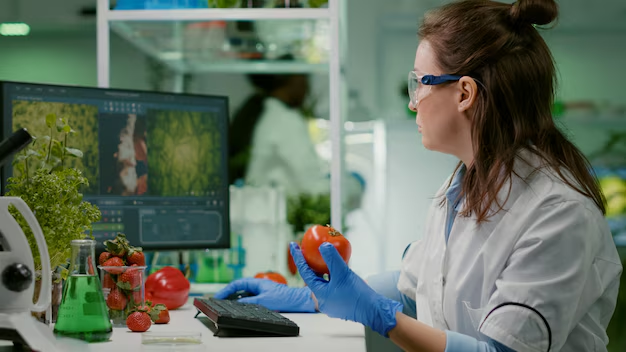
Technology is revolutionizing food production, making it safer, sustainable, and efficient. Aseptic fruit purees are one example of innovation, as they keep freshness and flavor without the need for harmful preservatives. These innovations illustrate how technology is improving the quality of our food while tackling global issues such as food security and waste.
The Changing Landscape of Food Production
The food production business is changing to match modern expectations. Safety, sustainability, and efficiency remain important priorities. As technology progresses, it reshapes every aspect of the food production process, from farming to packaging.
The Role of Technology in Food Safety
Technology plays a crucial role in ensuring food safety. Aseptic processing, a method of sterilizing both food and packaging, has significantly reduced contamination concerns. This method ensures that items such as juices, soups, and purees remain safe for extended periods.
What Are Aseptic Fruit Purees?
Sterilizing and packing fruits in an enclosed space creates aseptic fruit puree. This method ensures that the puree remains fresh without the need for refrigeration or other ingredients. These purees are ideal for companies seeking high-quality, safe ingredients that are ready to use.
Benefits of Aseptic Processing
Aseptic processing offers several advantages:
- Longer Shelf Life: Products stay fresh for months without refrigeration.
- Better Taste and Nutrition: Retains the natural flavors and nutrients of the ingredients.
- Fewer Preservatives: This approach eliminates the need for chemical preservatives, thereby making products healthier.
Automation and Smart Systems in Food Production
Automation is streamlining food production. Robots handle repetitive tasks like sorting and packaging, while smart systems monitor quality in real time. These innovations improve efficiency and reduce human error.
Precision Agriculture and Food Production
Drones and IoT devices are helping farmers optimize their resources. These technologies track soil conditions, weather patterns, and crop health, enabling precise interventions to boost yield and quality.
Sustainable Food Production Technologies
Sustainability is a growing concern. Technologies like waste-reducing machines and biodegradable packaging are making food production more eco-friendly. For instance, smart packaging can monitor freshness, reducing unnecessary waste.
AI and Data Analytics in Food Production
Artificial intelligence is revolutionizing food production. It predicts consumer demand, helping manufacturers minimize waste. AI also personalizes food products, catering to health-conscious and dietary-specific consumers.
How Are Innovations Shaping Consumer Choices?
Technology is aligning food production with consumer preferences. Health-focused innovations, like low-sugar alternatives and organic options, are now easier to produce and distribute. Convenience, such as ready-to-eat meals, has also become more accessible thanks to technological advancements.
Challenges in Adopting New Technologies
Despite its benefits, adopting technology in food production comes with challenges. High implementation costs and regulatory barriers slow down progress. Ensuring that these innovations are safe and cost-effective remains a priority.
The Future of Food Production
The future holds exciting possibilities. Biotech is advancing lab-grown meats and plant-based alternatives, addressing environmental concerns and food security. These innovations could redefine the way we think about food.
The Importance of Food Traceability
Food traceability ensures you know where your food comes from. Technologieslike blockchain record every step, from farm to table. This builds trust and improves safety. It also helps track issues quickly, reducing food recalls.
3D Printing in Food Production
3D printing is a futuristic way to create food. It layers ingredients to make custom designs or textures. Restaurants and food companies use it to make artistic dishes and innovate in food design. It’s fun, creative, and sustainable.
Reducing Carbon Footprints in Food Production
Food production can harm the environment. Technologies now focus on reducing carbon footprints. Solar-powered machinery and energy-efficient factories are part of the solution. This shift protects the planet while meeting food demands.
Biodegradable and Edible Packaging
Packaging waste is a major problem. New materials, like edible and biodegradable packaging, solve this issue. These options reduce pollution and offer eco-friendly choices for consumers.
Virtual Reality (VR) in Food Training
Food workers are now receiving training through VR. It teaches them how to handle food safely in virtual environments. This improves skills while reducing mistakes in real-life kitchens or factories.
Conclusion
Food production is undergoing a revolution due to technology. Food is becoming safer, healthier, and more sustainable thanks to innovations like aseptic fruit purees and AI-powered solutions. The future is promising for creative solutions that benefit both producers and consumers, even though there are still obstacles to overcome.
FAQs
1. What is aseptic processing?
Aseptic processing is a method that sterilizes food and packaging separately to ensure a long shelf life without preservatives.
2. How does technology ensure food safety?
Innovations like aseptic processing, real-time monitoring, and robotics reduce contamination risks and maintain high safety standards.
3. Can technology reduce food waste?
Yes, smart packaging and AI-driven demand forecasting minimize waste by improving efficiency in production and distribution.
4. Are natural foods compatible with high-tech processing?
Absolutely. Technologies like aseptic processing retain natural flavors and nutrients while ensuring food safety.
5. How does AI improve food production?
AI analyzes data to optimize processes, reduce waste, and create personalized food options for consumers.
